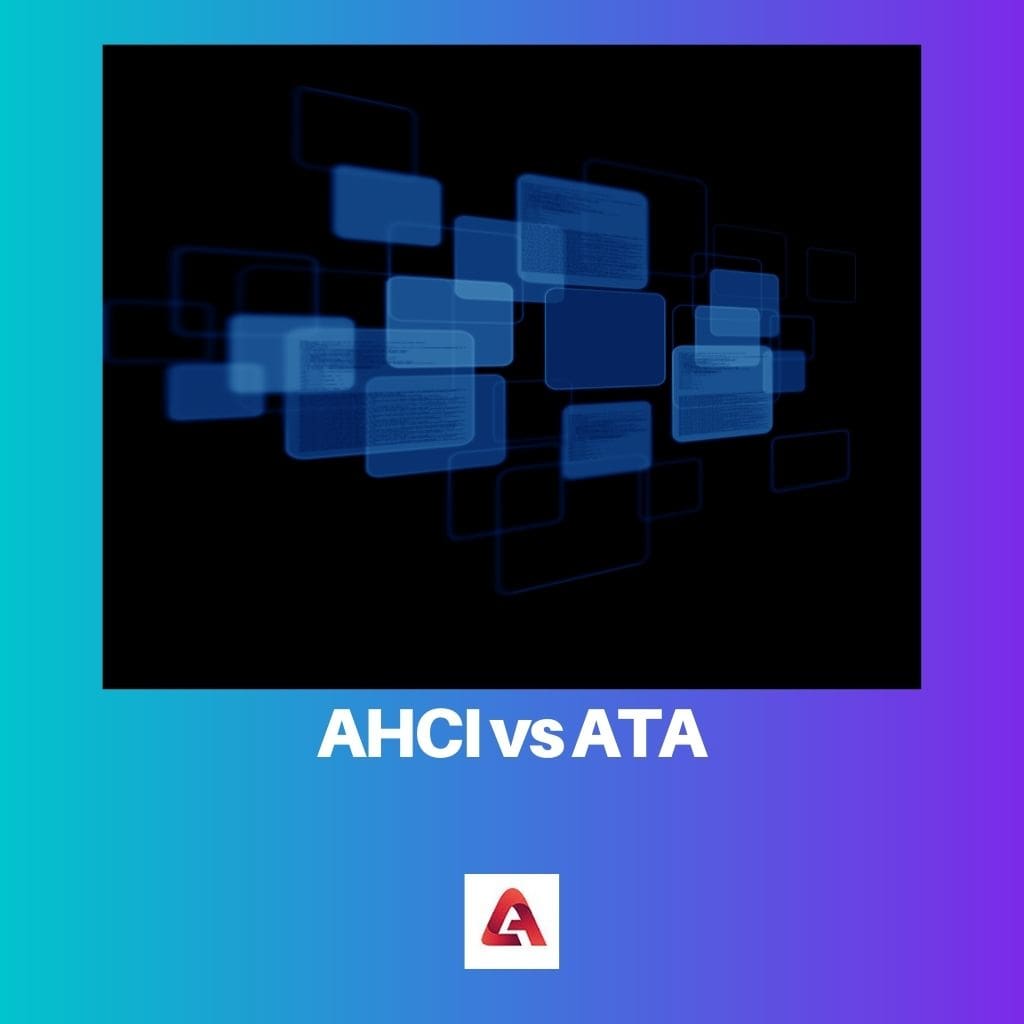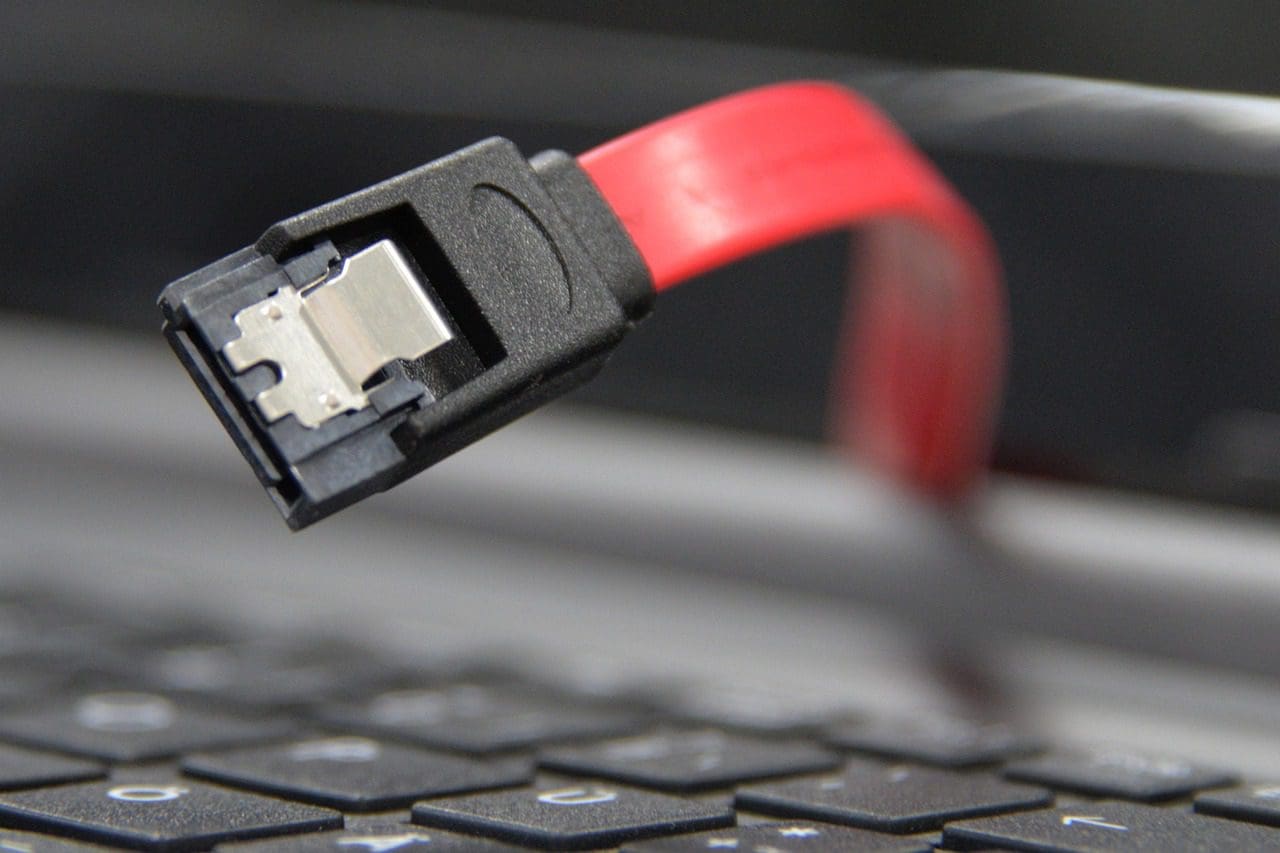In the world of host controllers and controller interfaces to control and give tasks to the host controllers, many terms or names of devices and interfaces can be found.
The most common terms one can come across are AHCI and ATA. One is the controller interface, and the other is the host controller. It has been a task to be able to differentiate between them.
Key Takeaways
- AHCI (Advanced Host Controller Interface) is a newer interface standard than ATA (Advanced Technology Attachment).
- AHCI supports features like hot-swapping and native command queuing, which ATA does not offer.
- AHCI provides better performance and improved energy efficiency than ATA due to its advanced features.
AHCI vs. ATA
AHCI stands for Advanced Host Controller Interface, which is a hardware mechanism that allows software to communicate with Serial ATA (SATA) devices such as hard drives and solid-state drives. ATA (Advanced Technology Attachment) is a type of computer interface used to connect storage devices such as hard drives and solid-state drives (SSDs) to a motherboard.

AHCI, or Advanced Host Controller Interface, as the name suggests, is a controller interface used for specifying the tasks or actions of other hosts controllers they are designed for. Intel defines it as a necessary technical standard for defining operations.
ATA, or Advanced Technology Attachment, is the host controller that defines the passage of information between storage and a host. They also connect storage devices. ATA is connected to a motherboard but can be found to be connected to two hard drive devices.
Comparison Table
| Parameters of Comparison | AHCI | ATA |
|---|---|---|
| Abbreviation for | Advanced Host Controller Interface | Advanced Technology Attachment |
| Meaning | It is a controller interface | Connects storage device |
| Version | Relatively new | It is an old version |
| Applications | It specifies the actions of the host controllers like SATA | The passing of information between storage and the host. |
| Advantage | It has updated features like hot-plugging and NCQ | It is compatible with older versions of devices |
| Implementing | Hard to implement | Relatively easier to implement |
What is AHCI?
AHCI, or Advanced Host Controller Interface, is the controller interface that specifies the actions by the host controllers like SATA. They have two added features, NCQ, and hot-plugging.
NCQ or Native Command Queuing allows the controllers to change the order for receiving all the required output and data with a minimum number of spins. Hot-plugging is the ability to add/remove hard drives from the system without having to reboot the entire system.
So, it treats hard drives as removable memory cards. Since they are relatively new and updated versions, they are incompatible with the older versions of ATA or PATA.
So, if ATA is already connected to your operating system, you may have to install a fresh operating system and the correct AHCI to change it. Designers and hardware developers use it to give standard methods for detecting and configuring the SATA adapter.
They are harder to implement as they are compatible with only SATA.

What is ATA?
ATA is an Advanced Technology Attachment that passes information between storage and the host. It is a host controller and an interface between the storage and the host, as it connects the right storage device. The first-ever ATA was made in 1986
There are two types of ATA: PATA and SATA. SATA is the later version of ATA and is compatible with AHCI up to a limit since it was designed for SATA or Serial ATA. Parallel ATA or PATA and ATA are acronyms that refer to one another.
Though AHCI was made for SATA, SATA can also operate on IDE. There is also much hardware that supports SATA without AHCI. ATA has a reliable speed and is one of the most common and cheapest interfaces.
They are backward compatible, i.e., the newer versions of ATA can be used with the old ATA interface. Usually, ATA is connected to a motherboard from one end and a hard drive at the other. They can also be connected to two devices where one is called a slave and the other a master.

Main Differences Between AHCI and ATA
- AHCI stands for Advanced Host Controller Interface, whereas ATA stands for Advanced Technology Attachment.
- AHCI is just a controller interface that runs with the later version of ATA called SATA. ATA is the one that connects storage devices.
- Since AHCI was designed for Serial ATA, it is relatively new compared to ATA. It is because ATA is old that AHCI is not compatible with it.
- ATA is used for connecting a storage device with a host as it is a host controller. Since AHCI is a controller interface, it specifies the actions of host controllers.
- The advantage of AHCI over ATA is that they have two added features not there in ATA: NCQ and hot-plugging. The hard drive of AHCI is treated like removable memory chips. Whereas ATA is reverse compatible. The newer versions are compatible with the old ATA, unlike AHCI.
- If one has an operating system, installing or implementing ATA is easy. But once ATA is installed, it would not be easy to implement AHCI as it requires installing a fresh browser and getting AHCI from the correct software.
A clear and informative article, gives a comprehensive explanation of the differences between AHCI and ATA.
Informative article. This is a good summary of the differences between AHCI and ATA and explains the technical details quite clearly.
It’s evident that AHCI offers more benefits and features compared to ATA, well-explained article.
This article provides a solid breakdown of the practical differences between AHCI and ATA, which is helpful for those looking to understand the implications of using one over the other.
The article could have given a bit more technical detail to explain how AHCI and ATA operate at a lower level, but it’s a good starting point for those looking to understand the basics.
A detailed comparison table would have been a nice addition to this article, but the information provided gives a good overview of the topic.
A bit more humor and context around the history of these interfaces would have made this article more engaging, but it provides useful insight into AHCI and ATA.
The article does well to explain the practical advantages of AHCI over ATA, though a more in-depth look at the technical implications would have made it even more informative.
AHCI sounds like a more advanced and feature-rich interface compared to ATA. This explanation really drove home those points.
Seems like AHCI is the way to go for those looking for performance and efficiency. Good breakdown of the key differences.